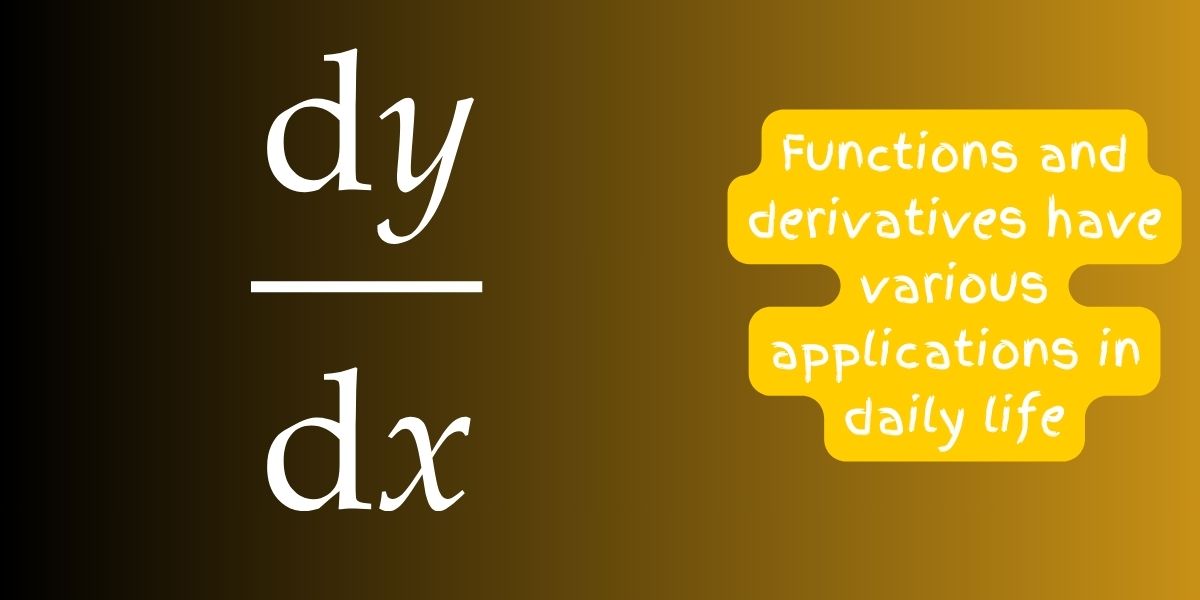Functions and derivatives, which are fundamental concepts in calculus, have various applications in daily life across different fields. Here are some examples:
- Physics and Engineering: Functions and derivatives are extensively used in physics and engineering to describe and analyze the behavior of physical systems. For instance, in mechanics, derivatives are used to calculate velocity and acceleration from position functions, while in electrical engineering, derivatives help model rates of change in voltage and current in circuits.
- Economics and Finance: In economics and finance, functions and derivatives are used to model and analyze economic variables, such as demand and supply functions, production functions, and utility functions. Derivatives are also used to calculate rates of change in financial instruments, such as options and futures contracts, and to manage risk in investment portfolios.
- Medicine and Biology: Functions and derivatives are employed in medical and biological sciences to model physiological processes and analyze biological data. For example, in pharmacokinetics, derivatives are used to describe the rate of drug absorption, distribution, metabolism, and excretion in the body. In genetics, derivatives help model rates of change in gene expression and population growth.
- Computer Science and Information Technology: Functions and derivatives play a crucial role in computer science and information technology, particularly in areas such as data analysis, signal processing, and machine learning. Derivatives are used to optimize algorithms, train neural networks, and analyze patterns in large datasets, enabling applications like image recognition, natural language processing, and autonomous vehicles.
- Business and Management: Functions and derivatives are utilized in business and management to analyze market trends, optimize production processes, and make strategic decisions. For instance, derivatives help calculate marginal cost, revenue, and profit functions in economics, while in operations research, derivatives are used to optimize supply chain logistics and inventory management.
- Architecture and Design: In architecture and design, functions and derivatives are used to model and optimize geometric shapes, structural designs, and building materials. Derivatives help calculate rates of change in dimensions, angles, and volumes, enabling architects and designers to create efficient and aesthetically pleasing structures.
- Environmental Science and Ecology: Functions and derivatives are applied in environmental science and ecology to model environmental phenomena, such as population dynamics, ecosystem interactions, and climate change. Derivatives help analyze rates of change in environmental variables, such as temperature, precipitation, and species abundance, aiding in environmental monitoring and conservation efforts.
- Sports and Athletics: Functions and derivatives are used in sports and athletics to analyze athletic performance, optimize training regimens, and improve techniques. For example, derivatives help calculate rates of change in speed, acceleration, and force during athletic movements, such as running, jumping, and throwing.
In summary, functions and derivatives have diverse applications in everyday life, ranging from science and technology to business and recreation. Their versatility and analytical power make them essential tools for understanding and modeling complex phenomena and making informed decisions in various domains.


No responses yet